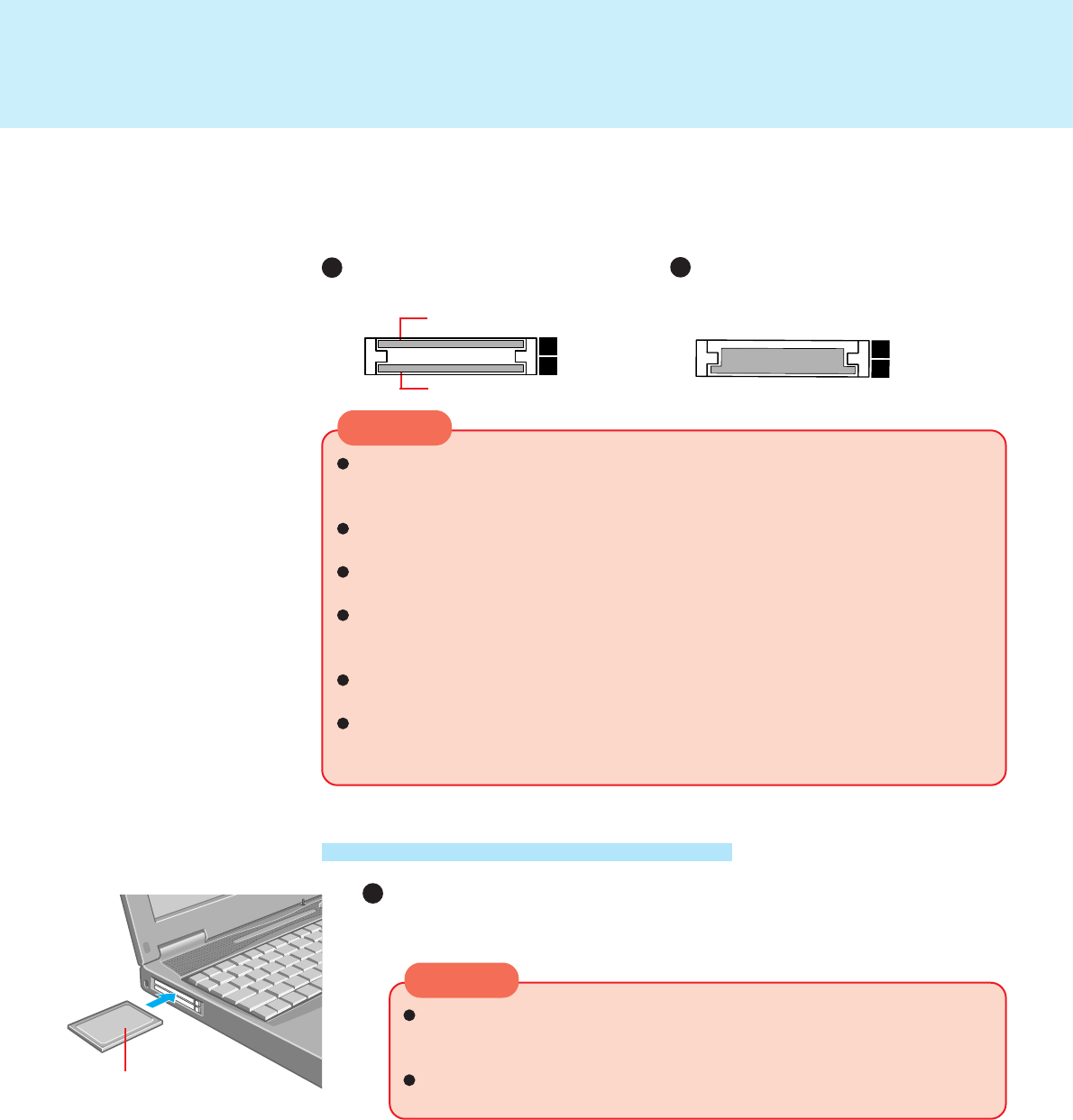
26
PC Cards
Your computer has two PC Card slots. These slots conform to the PC Card Standard;
therefore, communications or SCSI devices, etc., may be utilized. The slots allow you to
use two Type I or Type II cards (or one Type I and one Type II), or one Type III card.
Type I or II
Two cards can be used simultaneously.
Type III
One card can be used only in the slot 1.
Check the PC Cards’ specifications. Be sure the total operating current does not
exceed the specified limit. Damage may result otherwise.
Allowable Current (total for two slots) : 3.3 V: 400 mA, 5 V: 400 mA
There are times when both a Type I card and a Type II card will not work at the
same time.
ZV card, SRAM card, FLASH ROM card (except for an ATA interface) and card
requiring 12V are not supported.
With the repeated insertion/removal of a PC Card, the computer may no longer
recognize the PC Card (depending on the type of card).
In such cases, restart the computer.
When inserting one more CardBus type card with one already inserted, after en-
tering the standby or hibernation mode, the computer may not function properly.
If the computer freezes after resuming from the standby or hibernation mode, try
removing and then reinserting the PC Card. If this does not correct the problem,
reboot the computer.
Slot (Socket) 2
Slot (Socket) 1
CAUTION
(To next page)
Installing a PC Card
Slide the PC Card in until it snaps into place. Refer to the operation manual of
each card on how to install the card (insertion is typically label-side up).
Label-side up
Installing/Removing the PC Card
CAUTION
In the case of a PC Card to connect a peripheral device (SCSI, IEEE
1394, etc.), first connect the peripheral device to the card, and then
insert the card after switching ON the device.
When inserting a card, do not force the card in if difficulty is encountered.
You may damage the slot, making it impossible to remove the card.


















